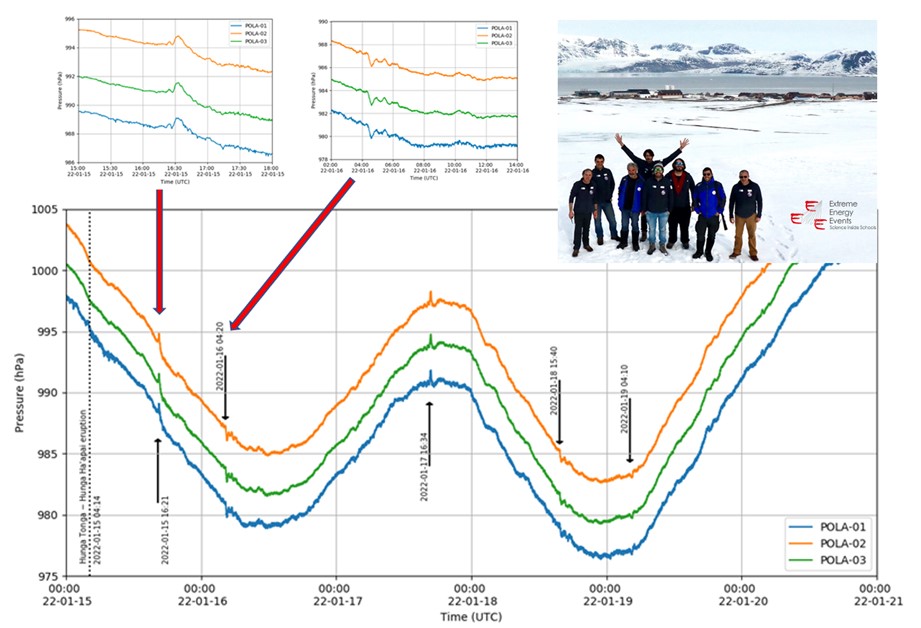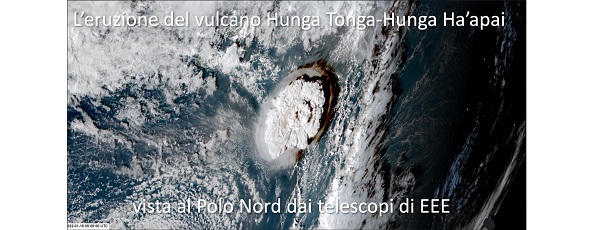In the Svalbard archipelago, beyond the Arctic Circle, the permanent station of the EEE project for cosmic rays (PolarqEEEst) has picked up signals related to the recent eruption of the volcano in the Tonga archipelago. Twelve hours after the eruption, the barometric sensors, installed together with the three EEE detectors in Ny-Ålesund with the purpose of correcting the pressure dependence of the muon rate, observed an anomalous oscillation of the atmospheric pressure, with an amplitude of 1.3 hPa. Further oscillations, detected about 12, 24, 36 and 48 hours after the event, are compatible with the arrival of the shock wave from the opposite direction, and with successive passages of the two waves, after completing further revolutions around the Earth. The detectors have been assembled and installed with the fundamental contribution of the technical services of the Bologna Section, and are operational in the international research base in Ny-Ålesund since 2019. The PolarqEEEst experiment is the result of a collaboration between the INFN Sections and Universities of Bologna and Bari and the Centro Fermi in Rome, with the important support of the Italian CNR for the permanent installation in Ny-Ålesund. This result underlines the reliability of the detectors, which can operate for long periods of time, providing useful measurements for cross-disciplinary scientific studies.



